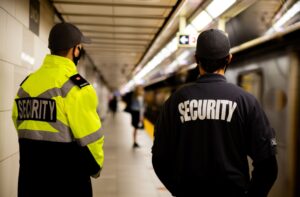Spectator safety is a top priority for any event. Whether it’s a small gathering or a large stadium concert, ensuring the well-being of attendees is essential. Proper training equips event staff with the skills needed to handle various situations, from crowd control to emergency evacuations. This training makes a significant difference in keeping everyone safe and maintaining order.
Without appropriate safety training, event staff may struggle to manage emergencies. This can lead to chaotic situations and even injuries. Well-trained staff, on the other hand, can quickly and effectively address issues, making the event smoother and safer for everyone involved.
High-quality spectator safety training covers a range of topics and scenarios that staff may encounter. From recognising potential hazards to executing safety procedures, the knowledge gained from proper training is invaluable. By investing in comprehensive safety training, event organisers can ensure a safer, more enjoyable experience for all attendees.
Why Spectator Safety Training is Crucial
Importance of Training for Large Events
Spectator safety training is crucial for the smooth running of large events. Proper training helps event staff manage large crowds effectively, ensuring everything goes according to plan. Trained staff can identify and remove hazards quickly, preventing accidents before they happen. This training also ensures that events comply with safety regulations, avoiding potential legal issues.
Effective training prepares staff to handle various situations, from rowdy behaviour to medical emergencies. Employees who understand their roles and responsibilities can work together to keep spectators safe and maintain order. Well-trained staff contribute to a positive experience for attendees, who feel secure knowing that the event is in capable hands.
Potential Risks Without Proper Training
Without proper safety training, events can become hazardous. Untrained staff may fail to spot danger signs, leading to accidents that could have been avoided. They might also lack the skills needed to respond to emergencies quickly, putting attendees at risk. A lack of training can result in slow responses to critical situations, increasing the chances of injuries or worse.
Chaos can ensue when staff don’t know how to manage crowds or enforce safety rules. This can lead to bottlenecks, stampedes, and other dangerous situations. Proper training minimises these risks, ensuring that staff are well-prepared to handle any issues that arise, keeping everyone safe and the event running smoothly.
Key Components of Effective Safety Training
Essential Skills and Knowledge Areas
High-quality spectator safety training covers several essential skills and knowledge areas. These include understanding safety regulations, crowd management techniques, and first aid skills. Staff learn about the different types of hazards they might encounter and how to deal with them effectively. Training also includes communication skills, ensuring that staff can provide clear instructions to attendees during emergencies.
Another critical area is understanding how to use safety equipment. Staff must know how to operate fire extinguishers, first aid kits, and other emergency tools. Knowledge of evacuation procedures is also vital, as is the ability to stay calm under pressure. These skills help create a well-prepared team ready to handle any situation.
Real-World Scenarios and Practical Exercises
Practical exercises are a key component of effective safety training. These exercises allow staff to apply what they’ve learned in real-world scenarios. Role-playing different situations, such as an evacuation or a medical emergency, helps staff understand their roles better. It also builds confidence, enabling them to perform their duties more effectively during actual events.
Real-world scenarios provide hands-on experience, helping staff retain information and skills. For example, a drill might involve practising how to guide a large crowd to safety during a fire. These practical exercises ensure that when an emergency occurs, staff know exactly what to do, reducing panic and ensuring a swift, coordinated response.
Benefits of High-Quality Training for Event Staff
Improved Emergency Response
Proper training equips event staff to respond quickly and efficiently in emergencies. Trained staff can act confidently, reducing panic among attendees. This quick action can be the difference between a minor incident and a serious emergency. Knowing what to do in different scenarios, like evacuations or medical situations, ensures that staff can manage any crisis effectively.
Staff members with comprehensive training can also work better as a team. They understand their roles and how to coordinate with each other, leading to smoother operations. This teamwork is crucial during emergencies, as it enables faster, more organised responses. High-quality training builds this unity and preparedness.
Enhanced Overall Event Experience
Well-trained staff contribute significantly to the overall event experience. Spectators feel more secure when they see that staff are confident and capable. This sense of security enhances their enjoyment, as they can relax and focus on the event instead of worrying about safety.
Moreover, trained staff can handle day-to-day operational issues more efficiently. From guiding people to their seats to managing crowd flow, every aspect of the event runs more smoothly. This competence leads to a better experience for both attendees and organisers. High-quality training ensures that events are not only safer but also more enjoyable and memorable for everyone involved.
Implementing Training Programmes
Steps to Develop and Deliver Effective Training
Developing and delivering effective training programmes involves several steps:
1. Identify Needs: Determine what skills and knowledge areas are essential for your event staff.
2. Create a Curriculum: Design a comprehensive training plan that covers all necessary topics.
3. Choose Trainers: Select experienced trainers who can effectively teach the material.
4. Schedule Sessions: Plan regular training sessions and ensure all staff attend.
5. Include Practical Exercises: Ensure the training includes practical exercises to reinforce learning.
By following these steps, you can create a robust training programme that equips your staff with the necessary skills and knowledge.
Regular Updates and Continuous Improvement
Training should not be a one-time event. Regular updates are vital to keep the training current and effective. As new safety regulations and best practices emerge, your training programme should adapt to include these changes. Continuous improvement ensures that staff remain prepared for new challenges and can handle them efficiently.
Regular refresher courses can help remind staff of crucial safety procedures and keep their skills sharp. Feedback from past events can also be invaluable in identifying areas for improvement. By maintaining a culture of continuous learning, you can ensure that your event staff remain some of the best-trained professionals in the industry.
Conclusion
Spectator safety training is essential for ensuring the success and safety of any event. By investing in high-quality training, you equip your staff with the skills needed to manage crowds, respond to emergencies, and provide a seamless experience for attendees. Effective training goes beyond just meeting legal requirements; it contributes to a positive event atmosphere and enhances overall satisfaction.
At CR Training Solutions, we offer comprehensive safety training programmes designed to meet the unique needs of your event staff. Equip your team with the expertise they need to ensure every event is safe and successful. Visit our website today to learn more and enrol in our training programmes. Your event’s safety starts with well-trained staff.




